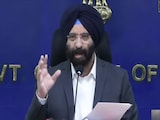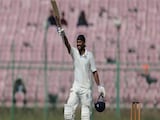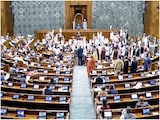New Delhi:
India on Wednesday launched the air quality monitoring system for the Commonwealth Games. The system will provide real time pollution data at 11 key locations in the city during the mega-event.
Developed by scientists at the Pune-based Indian Institute of Tropical Meteorology (IITM), the System of Air Pollution Forecasting and Research (SAFAR) was launched at the Jawaharlal Nehru Stadium in Delhi by Shailesh Nayak, secretary in the ministry of earth sciences.
SAFAR will provide information on air quality on an hourly basis and forecast pollution levels 24 hours in advance through wireless colour digital display panels located at 11 key points near the Games venues and the Games Village.
The IITM has also prepared an emission inventory for the Games to provide accurate air quality information.
The inventory has been prepared using data - number of vehicles, industries, shanties, hotels and restaurants and other sources - collected from near Games venues and the Games Village after a two-month long exercise.
Some 7,000 athletes and officials from 71 countries and territories are expected to participate in the Games, India's biggest sporting event since the 1982 Asian Games.
Asked whether the Earth Sciences Ministry would make suggestions to the Delhi government to improve the air quality if it is found not up to the mark, Nayak said it would not do so but the forecast can be used to take necessary mitigation actions.
He said after the Games, the India Meteorological Department (IMD) had plans to introduce the system as part of its Metro Weather Service for the capital.
"We will review the system for six months and depending upon the results will introduce in other cities of the country," Nayak said.
Beig said that the increase in use of CNG for vehicles in the capital has led to the rise in the levels of oxides of nitrogen (NOX) in the air but this was well within acceptable
limits.
He pointed out that the increase in NOX eventually leads to decrease in ozone in the air, which is considered to be harmful.
The Indian Institute of Tropical Meteorology (IITM) has also prepared an emission inventory for the Games to provide accurate air quality information.
The inventory has been prepared using data - number of vehicles, industries, shanties, hotels and restaurants and other sources - collected from near Games venues and the Games Village after a two-month long exercise.
Some 7,000 athletes and officials from 71 countries and territories are expected to participate in the Games, India's biggest sporting event since the 1982 Asian Games.
Developed by scientists at the Pune-based Indian Institute of Tropical Meteorology (IITM), the System of Air Pollution Forecasting and Research (SAFAR) was launched at the Jawaharlal Nehru Stadium in Delhi by Shailesh Nayak, secretary in the ministry of earth sciences.
SAFAR will provide information on air quality on an hourly basis and forecast pollution levels 24 hours in advance through wireless colour digital display panels located at 11 key points near the Games venues and the Games Village.
The IITM has also prepared an emission inventory for the Games to provide accurate air quality information.
The inventory has been prepared using data - number of vehicles, industries, shanties, hotels and restaurants and other sources - collected from near Games venues and the Games Village after a two-month long exercise.
Some 7,000 athletes and officials from 71 countries and territories are expected to participate in the Games, India's biggest sporting event since the 1982 Asian Games.
Asked whether the Earth Sciences Ministry would make suggestions to the Delhi government to improve the air quality if it is found not up to the mark, Nayak said it would not do so but the forecast can be used to take necessary mitigation actions.
He said after the Games, the India Meteorological Department (IMD) had plans to introduce the system as part of its Metro Weather Service for the capital.
"We will review the system for six months and depending upon the results will introduce in other cities of the country," Nayak said.
Beig said that the increase in use of CNG for vehicles in the capital has led to the rise in the levels of oxides of nitrogen (NOX) in the air but this was well within acceptable
limits.
He pointed out that the increase in NOX eventually leads to decrease in ozone in the air, which is considered to be harmful.
The Indian Institute of Tropical Meteorology (IITM) has also prepared an emission inventory for the Games to provide accurate air quality information.
The inventory has been prepared using data - number of vehicles, industries, shanties, hotels and restaurants and other sources - collected from near Games venues and the Games Village after a two-month long exercise.
Some 7,000 athletes and officials from 71 countries and territories are expected to participate in the Games, India's biggest sporting event since the 1982 Asian Games.















